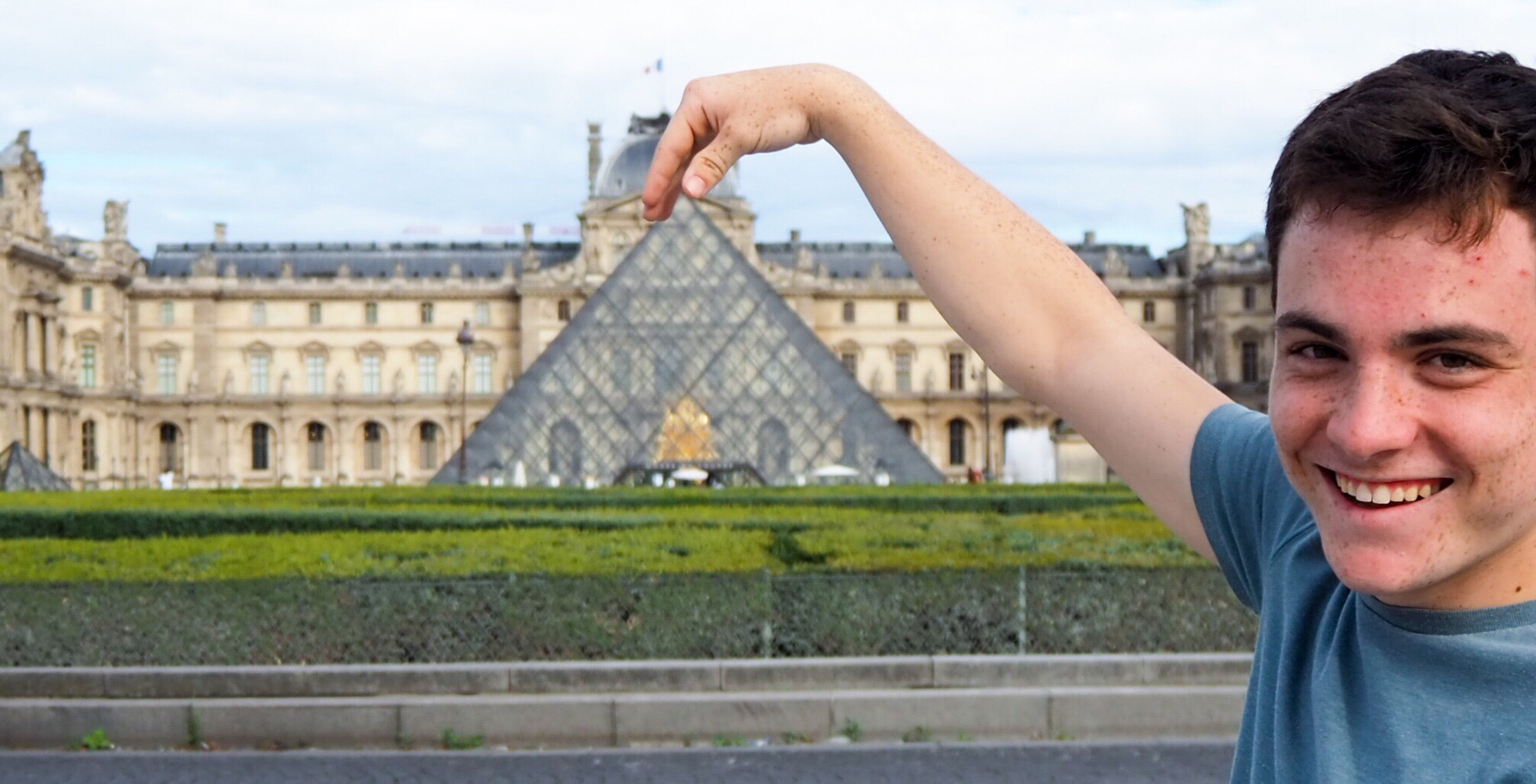
I was standing in front of the Mona Lisa, nuts to butts as they say, sweat pouring off me and onto all my adjacent neighbors from around the world. Four security guards were frantically working to keep the undulating crowd from heaving too close to Leonardo’s masterpiece, which is layered behind impenetrable glass. One of the guards was a young woman in her twenties with her hair tied back and wearing large round glasses that seemed trendy in Paris, but unlike anything I’ve seen in the States since the eighties. This young woman took the lead in keeping the hoard at bay. Her job required her to be constantly strict and vigilant. She looked exhausted, and as I jostled and pushed in the crowd, twenty feet from the worlds most famous painting, I briefly contemplated how miserable she must be.
My attention quickly shifted back to how miserable I was sucking in everyone else’s exhaust. And I feared that any disturbance in the crowd could lead to a deadly stampede. I reached back to grab the hands of one of my children to ensure they were o.k. There seemed to be no way out. To make matters worse, nobody was actually looking at the painting directly. Instead, everyone was looking at the subtle smile in the painting through a cell phone as they snapped photos. The worst offenders tried to contort their bodies in the packed crowd to take selfies.
As an aside, the iPhone craze within the Paris museums was enough to drive me to create this meme:
Anyhow, as I stood there in the middle of this madness, I began to wonder why. Why would somebody take a crappy photo of a painting that you can find easily online or in a book? Why was I standing here in this mob? Standing there, disgusted with myself for contributing to this young woman’s misery and my own, I started to think about the importance of travel. Is it meaningful, in any way, to have seen the Mona Lisa in person? Probably not. I learned more about social behavior watching the people check off their bucket list items with lame selfies. Had I been able to stand close to the painting, quietly studying the chiaroscuro, I’m sure the experience would have been infinitely better, but that wasn’t the case.
Standing in a queue to climb Notre Dame, and being smushed through the Palace of Versailles were similarly exhausting experiences. I’m not suggesting it was all for not, there were many wonderful moments in the Louvre, and many of the other must-see attractions in Paris. But the experience forced me to consider what I really wanted out of the remainder of my trip. First, I wanted to go somewhere that wasn’t so crowded that I feared for my life. I wanted to go somewhere that wasn’t on anyone’s bucket list. Second, I wanted to get to know some locals, and learn a bit about their world.
Rocca Sigillina sits nestled on a small ridge below the imposing Apuan Alps, in the province of Massa Carrara, in the province of Tuscany, Italy. There is nothing in the guidebooks that tells anyone to go to Rocca Sigillina. You have to take a chance and go there on your own accord. To get there you drive a car, preferably a tiny one as the road up the mountain winds through a half dozen hairpin turns. In spots the road is only wide enough for one vehicle. If another car approaches, you play a game of chicken to decide who gets to pass first. As your car growls up the steep incline you pass religious artifacts built along the roadside, which, for me, were subtle reminders to ask God to keep us safely on the intended part of the road.
The road ends at the church.
On the church is a clock steeple, which we discovered is alarmingly loud. You park on the road near the church. All the homes fan out on the ridge below the church, and you get to them by walking down narrow cobblestone alleyways that were built eight hundred years before the invention of the motor vehicle.
Rocca Sigillina was built in the 1100’s as a fortress, and thus, everything is made of stone, save for the wooden doors, the metal gates, and the red clay roofs. By today’s standards it is a very difficult place to live. Upon first walking through its streets it felt abandoned. I felt entirely alone in this magical, but imposing space. As I quietly moved through the town, however, I started to see and hear sounds of life. The first sign was a skittish band of alley cats that clearly saw me as an outsider and hissed when I got too close.
Signs of human life also started to emerge. Around one corner stood a stick and home-made broom carefully placed against a wall, along with a pair of old leather shoes.
Not long after I ran into a pair of elderly gentleman, one being the owner of the aforementioned shoes, and a dog. ‘Come ti chiami’ I cautiously uttered, hoping that I correctly asked his name, but knowing that my Italian pronunciation was surely sloppy. ‘Angelino’, he said. ‘Mi chiamo Greg’. The other man’s name was Bruno. Neither spoke any English. Had it not been for a younger man, named Marco, that came around the corner, our conversation would have been cut short given that I only had a few generic phrases under my belt. Marco had just enough broken English to give us a cursory understanding of what we were looking at, and to tell us that very few people live here year round anymore. All were very polite, and they allowed me to take their photo before we parted.
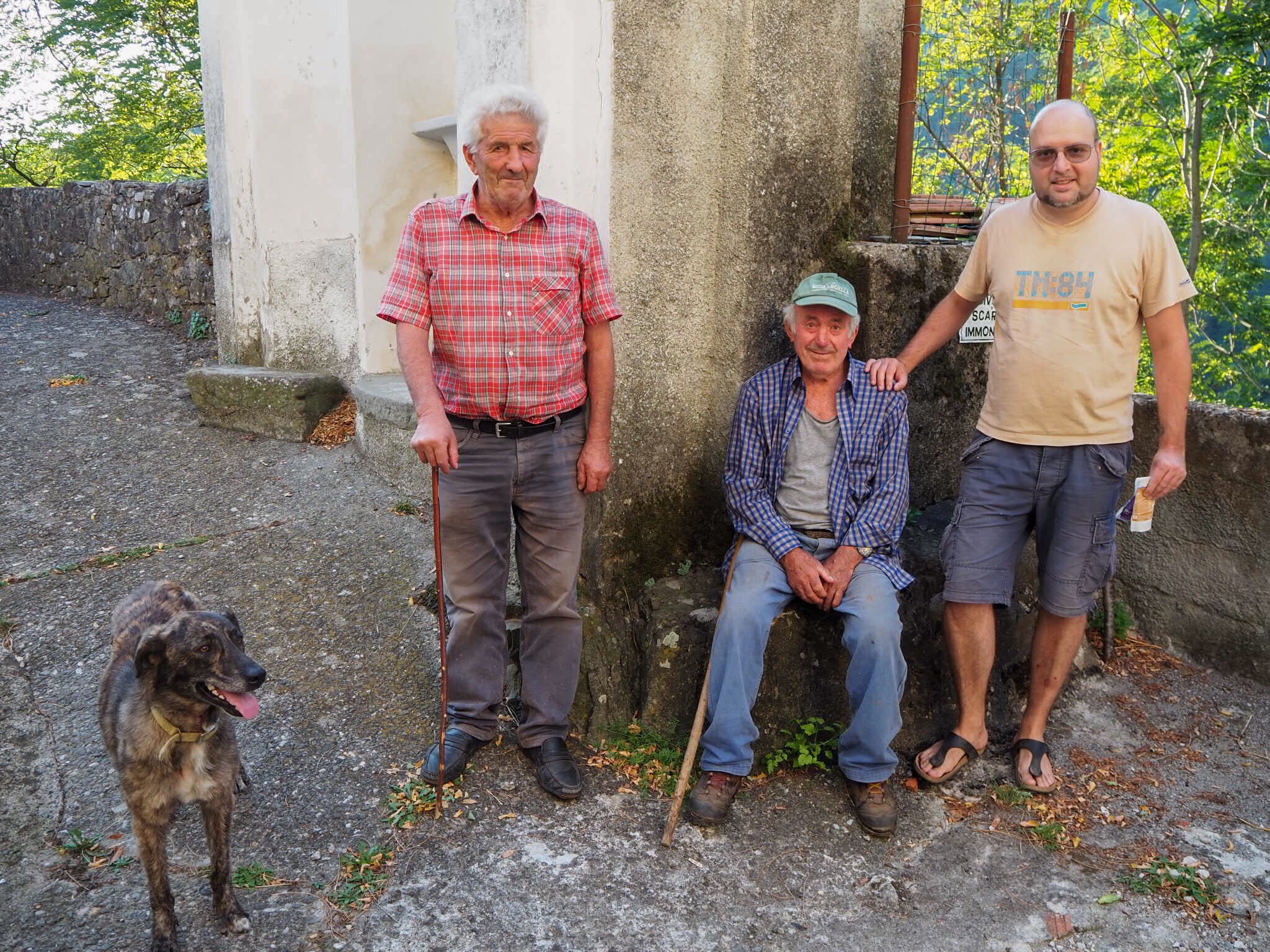
We stayed in Rocca Sigillina for two nights. Each evening and each morning I wandered the dormant streets, occasionally meeting someone new, but mostly taking in the sights, sounds, and smells.
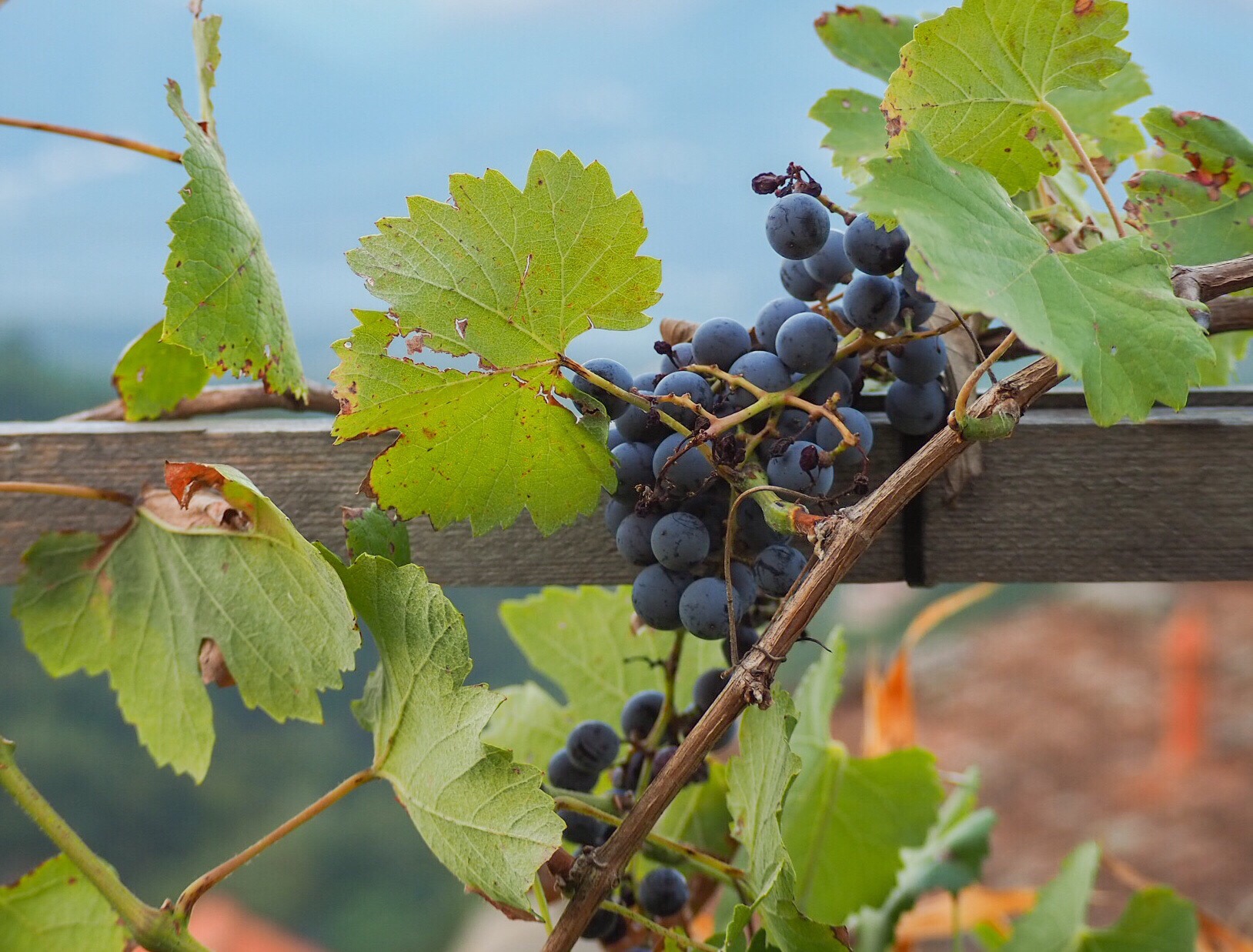
We stayed in the first floor of a two story home that had been completely modernized, including a beautiful pool looking over the valley below, while still retaining its old world charm of vaulted stone rooms.
Our host, Giovanna, later informed us that the previous residents in our accommodations were ‘mucca’, which after some animated translation efforts we learned were cows. Incidentally, the pronunciation of mucca is amusingly not that far off from ‘moo cow’!
During our first evening living in the barn, as it were, Giovanna’s family had a load of wood delivered for the winter. As we lounged around the pool, gazing out over the mountains, I realized that Giovanna, the home’s owner Barbara, and two older women were moving and stacking the newly delivered cords of wood. As everything in Rocca Sigillina is built into the steep landscape, moving the wood involved setting up a series of foot-wide PVC pipes to transport the wood from the church where it was unloaded, down over a stonewall, then over a clay roof, and into the yard below. The wood then needed to be carried and stacked into a shed. The pool would have to wait. It was clear to me that the only thing to do was to gather my two boys and help.
As we transported wood together, unclogged log jams in the PVC piping together, and collected a few cuts and bruises from the two hours of hard work together, the language barrier dissipated. Giovanna‘s three young boys, Brando, Fillipo, and Leonardo, joined the party and handed me smaller logs exclaiming, ‘piccolino!’ Marco, again, came around the corner and helped. ‘Beira’ was put out as refreshments, and they referred to me as ‘Grrega’ with the r’s slightly rolled, and we were thanked graciously for our help after all the wood was stacked.
When the work was complete, we retreated to our vaulted kitchen for some supper. Within minutes, there was a knock on our door. It was the littlest boy, Brando, who had come to offer a few band-aids for the scrapes and cuts we acquired during the wood hauling.
The next morning, as I again walked they alleyways, I met new characters. Ernesto was the first. He pointed to me as he approached while walking his dog and exclaimed, ‘Grrega…Boston’. I’ve learned, from the small fishing village in Maine where my family is from, that gossip travels fast in tight knit communities. Apparently that is true in Italy as well as it seemed he had heard of me. The next character I met further down they path was Giancarlo. I also learned that every man or boy I met in Rocca Sigillina has a name that ends with the letter ‘o’. Giancarlo, it seems, may be responsible for the alley cats, and they were all much nicer to me when they witnessed the two of us together. Upon first meeting me, Giancarlo extended his hand to shake mine and inquisitively asked, ‘American?’ He then proceeded to show me around a bit, opening doors to parts of the fortress, and pointing out subtle carvings in the stones that I had walked by multiple times without noticing.
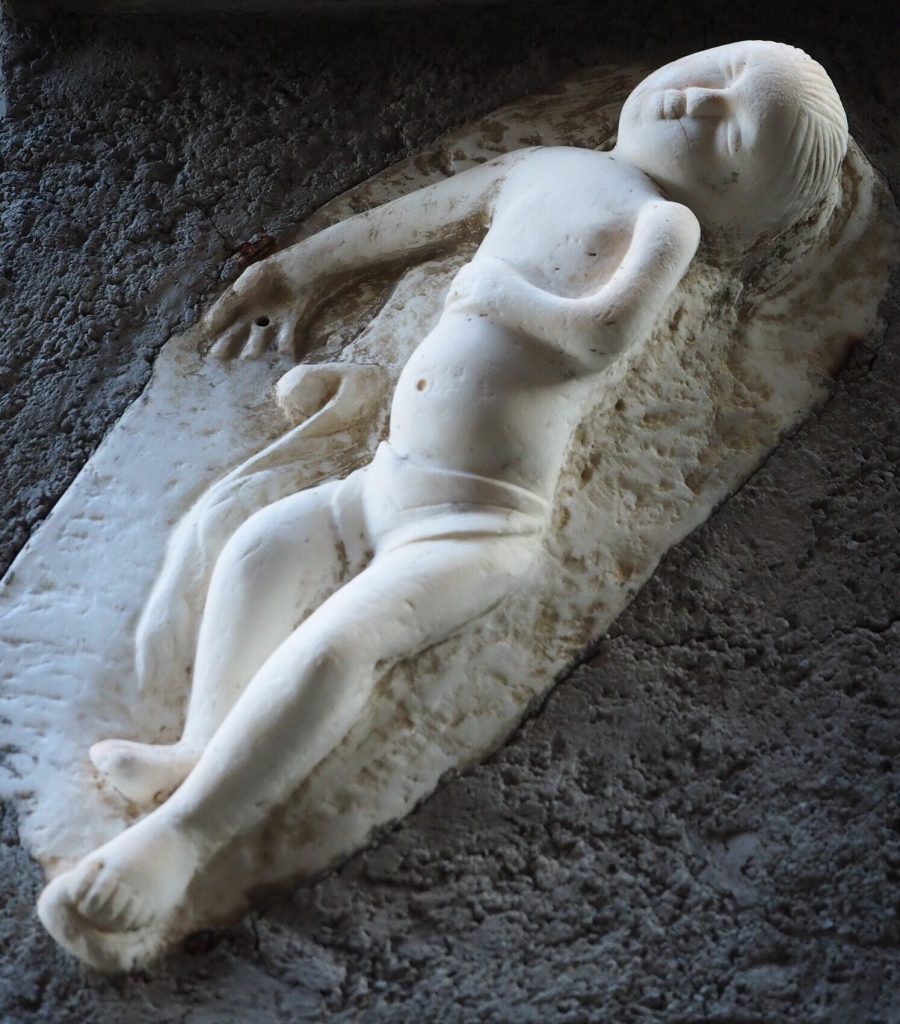
I could only vaguely guess the meaning of one out of twenty words he said, but he proudly continued his tour for me, and I was happy to follow. He shook my hand again as we parted and continued up a cobblestone alley with the Apuan peaks looming in the backdrop. I was reinforced with the notion that lending a hand the previous day had resulted in good will from the inhabitants of Rocca Sigillina.
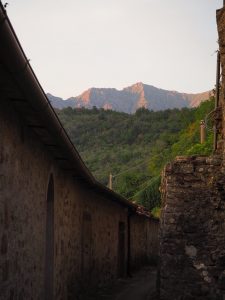
During our short stay my understanding of Rocca Sigillina, even with constraints of language and few occupants, started to come into focus like a jigsaw puzzle being solved one piece at a time. Many of the abandoned buildings were essentially animal barns that were no longer needed given that there is now a grocery store within a twenty minute drive. The more I looked and listened, the more I saw life as opposed to the absence of it. Everything started to feel quietly alive.
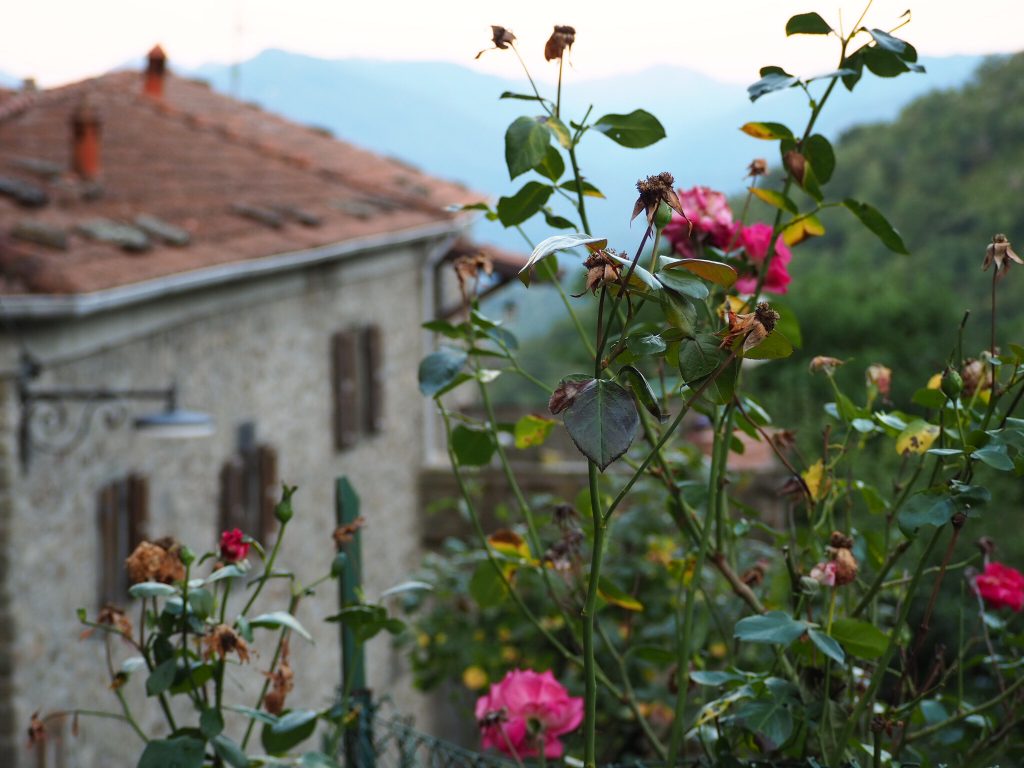
On one walk I saw an old upholstered chair oddly hidden around a seemingly benign corner.
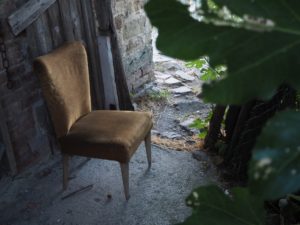
Upon further investigation, the chair was covered from the rain, but just feet away from a view you can’t pay for. This chair, made for comfort, was likely placed there intentionally by those that knew of the beauty that lay beyond. The contrast was striking.
I stood there, proud of my sleuthing and subsequent discovery, basking in front of God’s Mona Lisa. The landscape dropped away from the Tuscan orange rooftops into a valley below. Off to the left, on a ridge similar to where I stood, was another village, or ‘borgo’ as they say, with the glimmer of sun hitting the distant rooftops, a church, and a clock tower that always rang about two minutes after the one in Rocca Sigillina. To my right was an untouched ridge carpeted in green with just a hint of rust. Beyond the village in the valley rose a wall of mountains layered like spectators on grandstands, receding back towards the soft morning horizon. It was a perfect work of art and I was breathless with excitement. I had to take a picture.

Damn. At least I didn’t need to fend off a crowd while doing so.
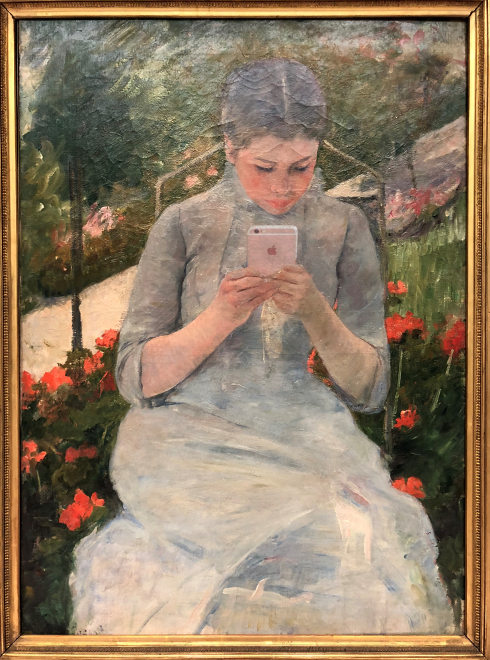
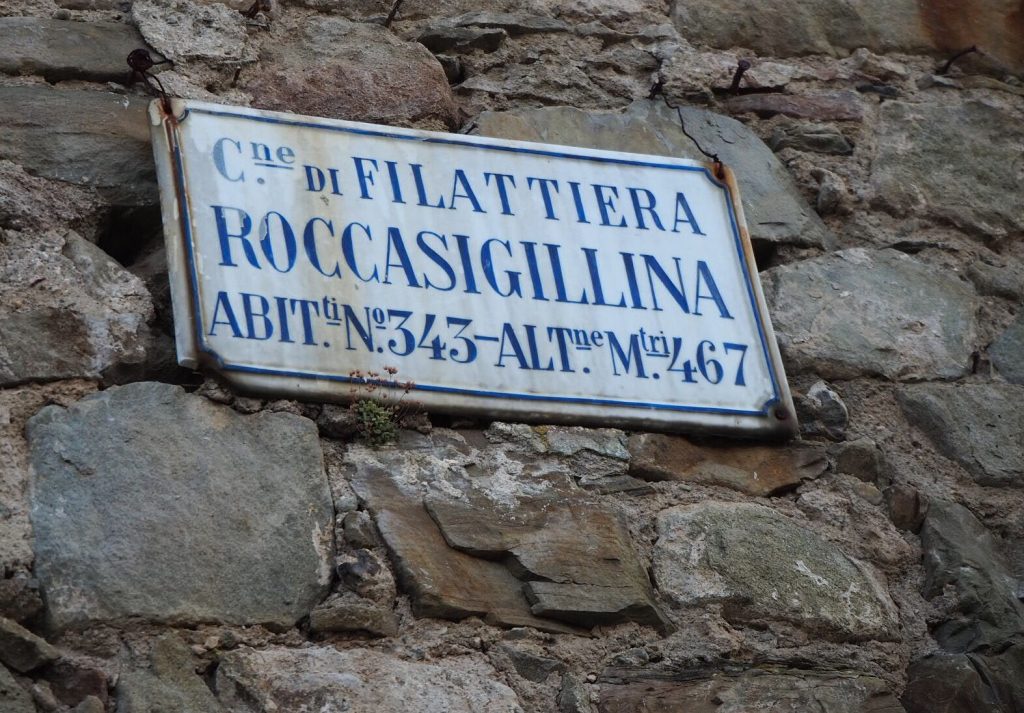
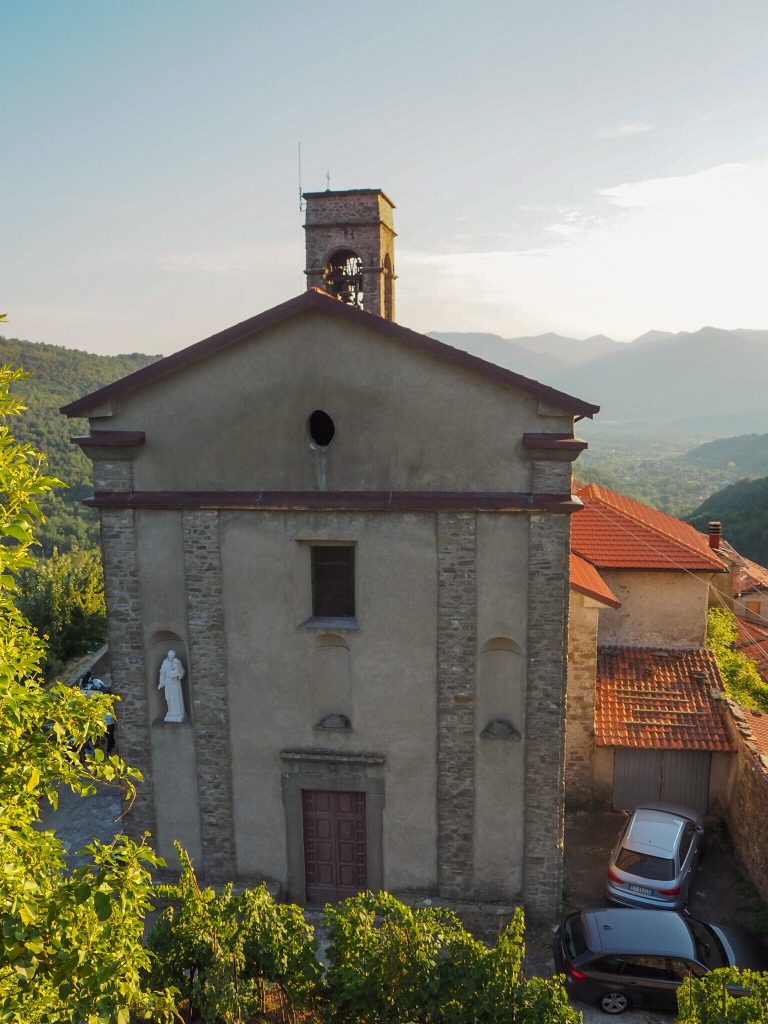
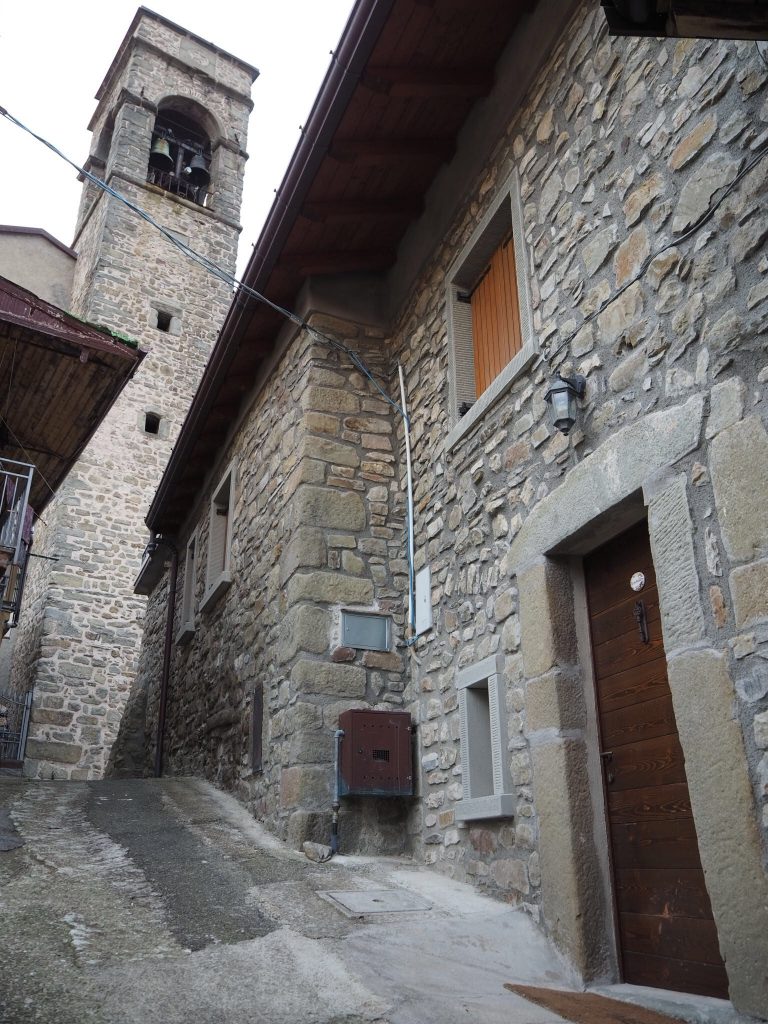
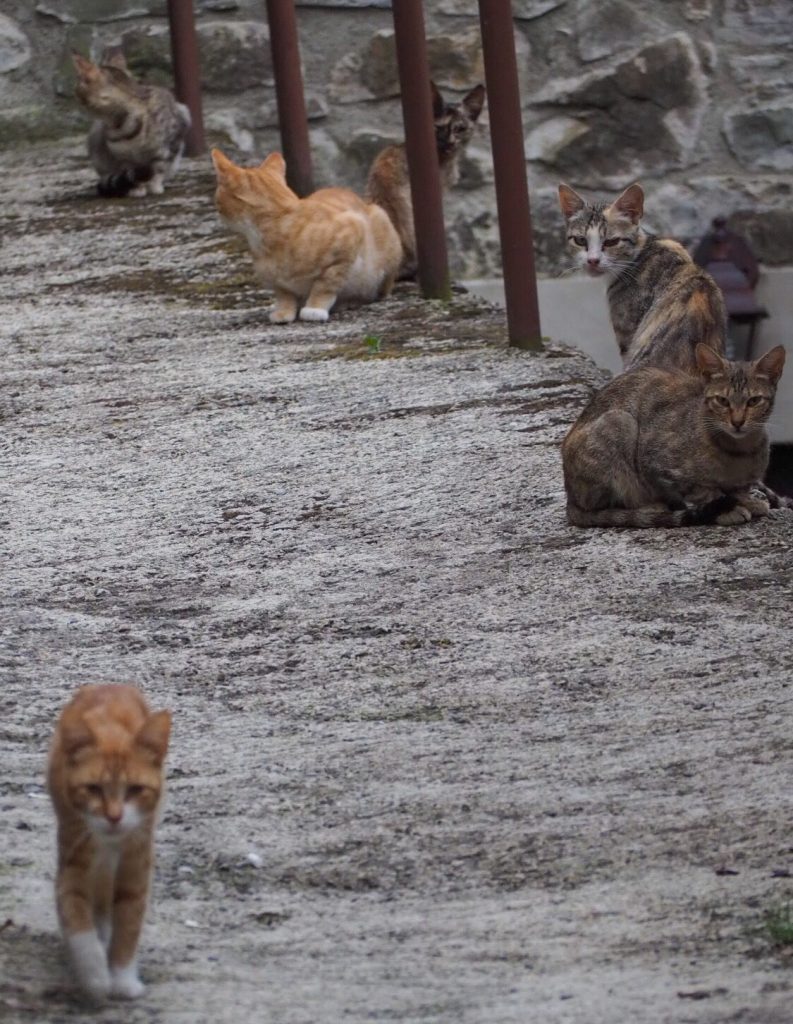
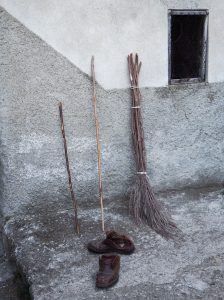
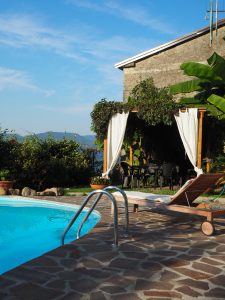
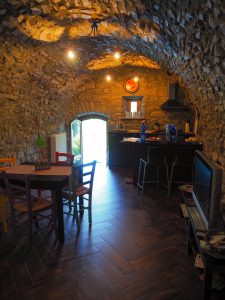

4 COMMENTS
I, very much, enjoyed your tour. Glad you had such a wonderful experience. You are an awesome writer. Love from NC- T&J
I visited Italy with my sister in the 70’s. We had family in Assisi and I used to love to roam the streets or sit outdoors in cafe’s with a cappuccino or gelato. Wondering the streets at nights with a cousin was fun, torches not street lights, stone buildings, cobblestone roads, stairs. It was so beautiful. If not for my sister planning trips to Rome, Florence, Sienna, Pisa, No crowds back then, no line to see The David and you could stand and look in amazement as long as you wanted. We were able to climb the leaning tower of Pisa. But I would have been happy just people watching and taking in the sites. I would love to go back. I enjoyed your article. Oh and we attended an Easter vigil service at midnight at a little stone church named San Damiano.
Nicely done.
Lovely, Greg <3